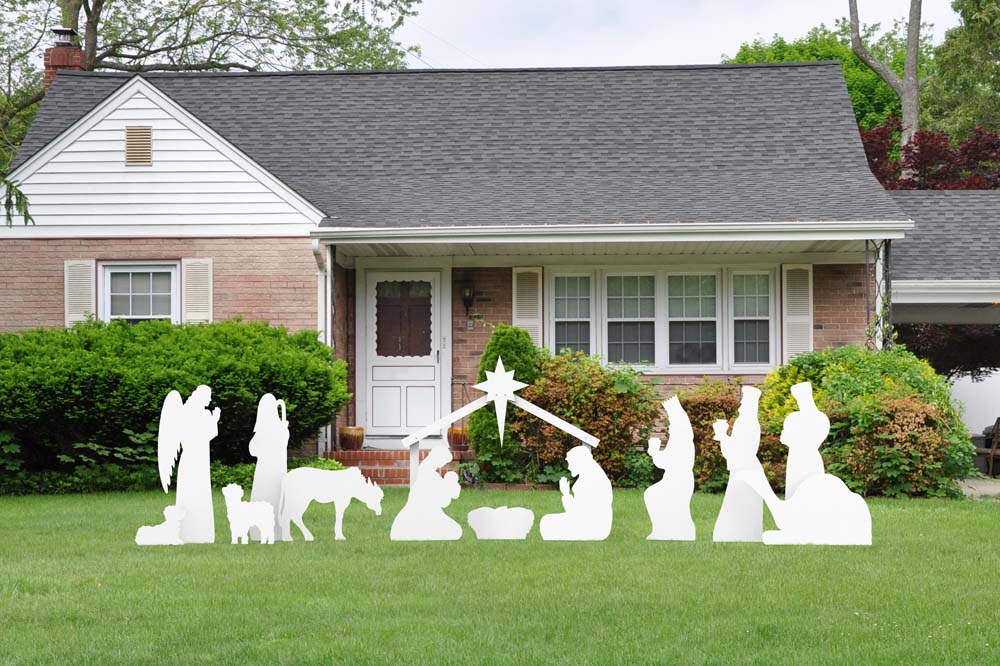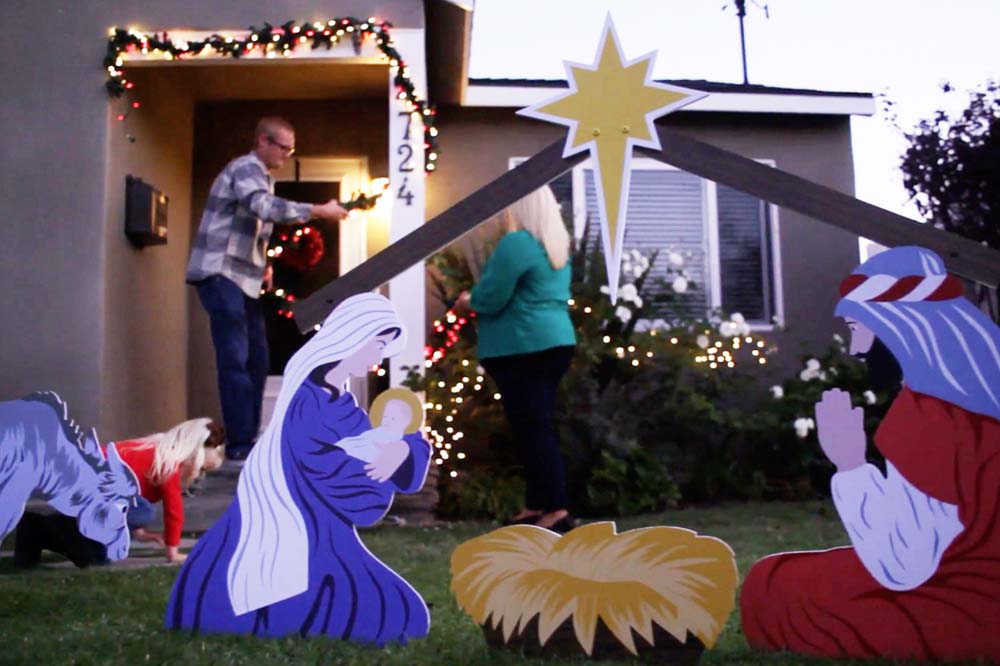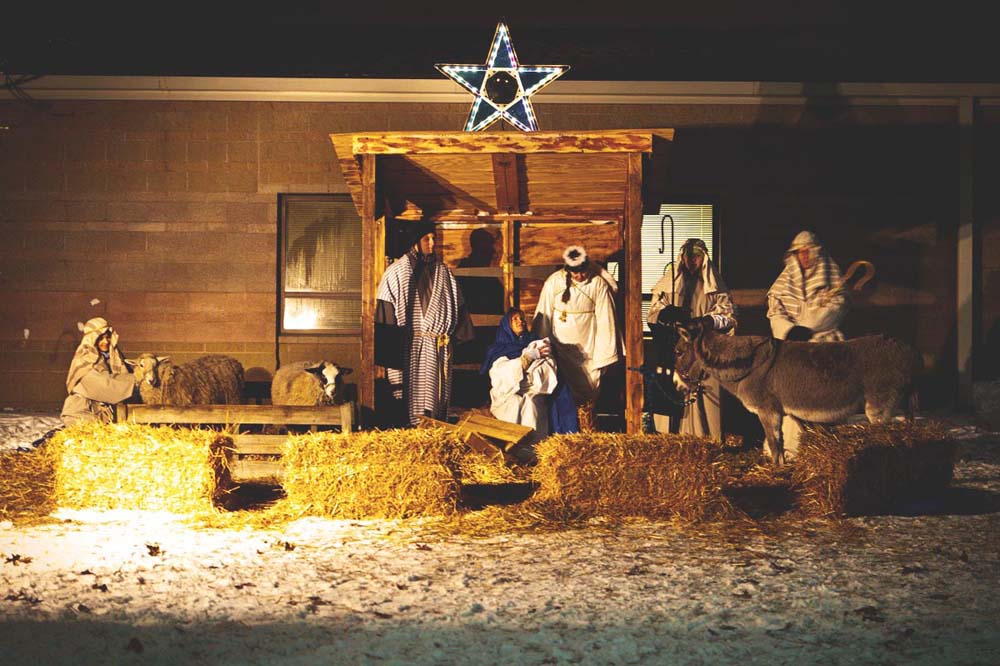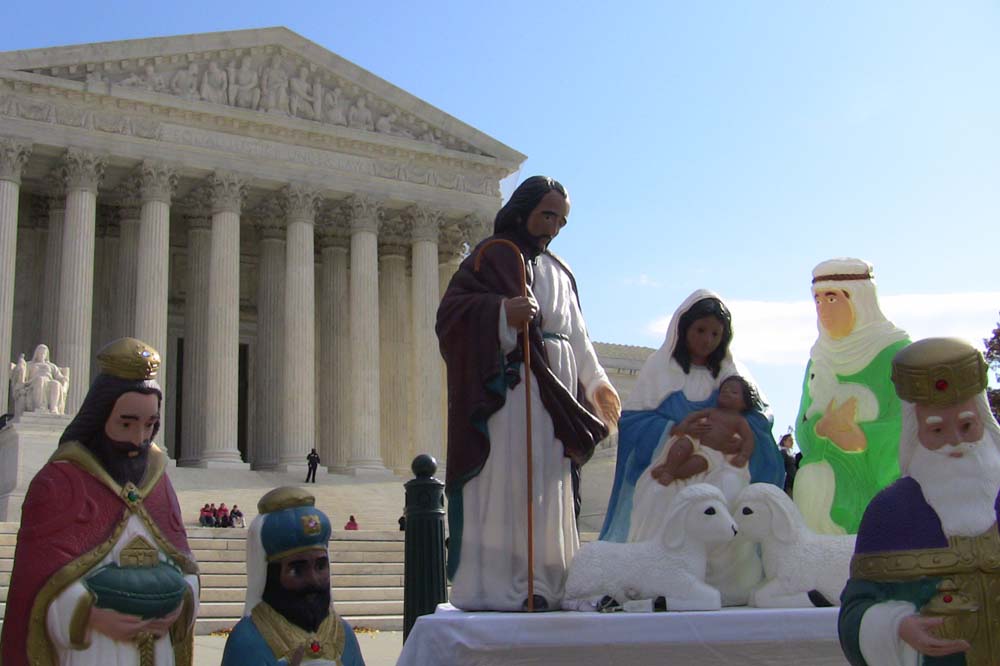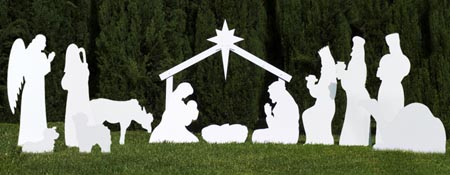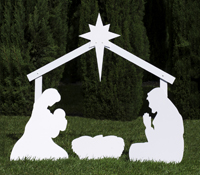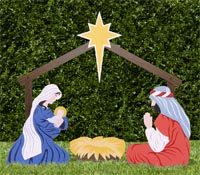Traditions for Placing Jesus and the Magi in Nativities
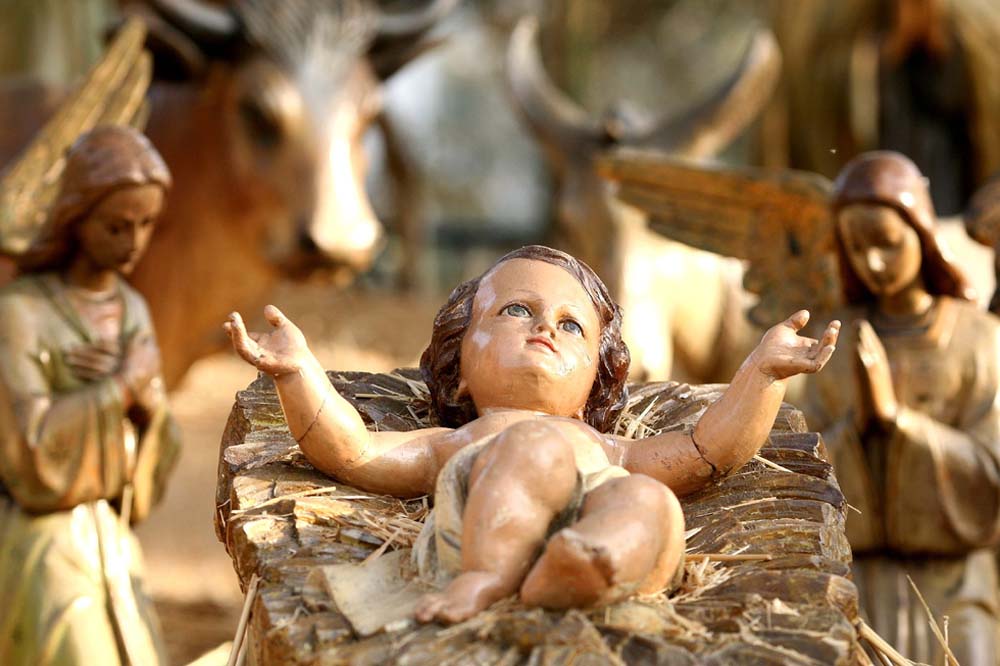
One of the most meaningful aspects of setting up a nativity scene inside or outside your home is the opportunity it offers for establishing traditions.
Depending on where they grew up and how they were raised, many families have specific customs concerning the setup and the placement of their crèche. Some of these traditions surround the placement of the Christ child and of the Magi (or kings).
Many families wait to place Baby Jesus on the manger until Christmas Eve. Churches and publicly displayed nativities often follow this custom as well.
In fact, the Directory on Popular Piety contains the following pastoral suggestion for Christmas Eve Mass: “At Midnight Mass, an event of major liturgical significance and of strong resonance in popular piety, the following could be given prominence: […] at the end of Mass, the faithful could be invited to kiss the image of the Child Jesus, which is then placed in a crib erected in the church or somewhere nearby.”
Home celebrations vary considerably from place to place and from family to family. Some families set up the stable in one area of a room, such as the family room or living room, and then place Mary and Joseph, the shepherds and the three wise men in other more separate areas.
As Christmas draws near, they move the figures closer to the manger. Then, they place the Holy Family in the crèche on Christmas Eve. They continue to bring the Magi closer little by little until they arrive on Epiphany, Jan. 6.
Who places the Christ child in the crib is another way to build a family tradition. In Italian tradition, for example, the most senior member of the household gets that honor. In other families, the eldest child gets to place the baby in the crib.
Other traditions include the children of the family placing wisps of straw in and around the crib each day until Christmas in order to prepare the bed – and their hearts – for the Holy birth. Thus, when the Christ Child arrives on Christmas Day, He will find a soft bed of straw to protect Him from the hard surfaces of the manger.
While an empty stable may not work well for a nativity scene in a public setting, some traditions still can develop with a public set-up. For example, at the dedication ceremony of the large outdoor nativity scene at Daley Plaza in Chicago the Saturday after each Thanksgiving, a group of children carefully places the baby in the manger’s crib.
Students who recently made their first Holy Communion carry Baby Jesus in procession to the manger each year at St. Wenceslaus Church in Verdigre, Nebraska. At St. Thomas More Church in Omaha, Nebraska, a specially selected kindergarten student carries baby Jesus to the manger in a first Christmas Eve Mass procession with the priest, deacons and altar servers. Other churches may introduce similar customs with live nativity scenes.
For many Christians, the Christmas season doesn’t end until the Feast of the Epiphany on January 6, and they use their nativity sets as part of this celebration.
According to the Gospel of Matthew, the men found the Christ child by following a star across the desert for 12 days to Bethlehem. Melchior, Caspar, and Balthazar then present baby Jesus with their three symbolic gifts – gold, frankincense, and myrrh.
Some churches, such as Omaha’s St. Vincent de Paul Parish, for example, place the three Kings in the church entry area away from the stable until Epiphany.
In discussing the use of the placement of Nativity figures in the celebration of Christmas in his book, The Christmas Crèche, Matthew Powell writes, “The use of statues for dramatic purposes, which continues to this day, was an added impetus to the development of the Christmas crèche where the Nativity scene takes on theatrical qualities.”


